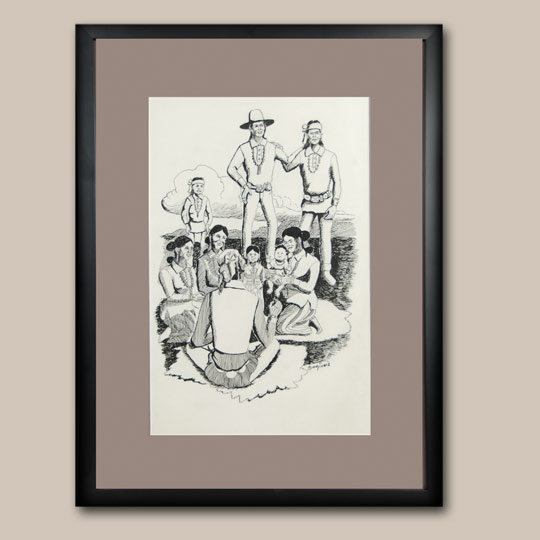Adobe Gallery Blog
Title: Diné (Navajo) Painting of a Navajo Family
Clara Lee Tanner expressed that Andrew Tsihnahjinnie was one of the most versatile of all Southwestern Indian artists. Perhaps it was his World War II stint in the Marines while stationed in the Pacific Theater that led to his versatility of style. His Pacific tour exposed him to Japanese and Chinese art which apparently had an effect on his works for a time after the war, but eventually he reverted back to his traditional Navajo style of painting. He progressed through many moods, solidifying a style momentarily, and then turning to something new and utterly different, but his subject matter continued to center around Navajo life and activity.

Tsihnahjinnie has portrayed a scene often enacted on the Navajo Reservation. Perhaps the grandfather figure with his back to the viewer is instructing family members or telling them a story. The happy expressions on the listener's faces would make one believe it is a happy or funny story.
The painting is framed using all acid-free materials and a black wood frame. It is signed in lower right but not dated.
Condition: Original condition
Provenance: from the Balcomb family collection
Recommended Reading: Southwest Indian Painting: a Changing Art by Clara Lee Tanner
Title: Diné (Navajo) Painting of a Navajo Family
Artist: Andrew Tsihnahjinnie (1916-2000)
Category: Paintings
Origin: Diné - Navajo Nation
Medium: Watercolor
Size: 14-1/4" x 9-1/4" image-unframed
Item # C3083C


